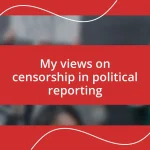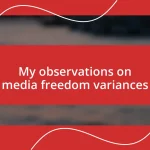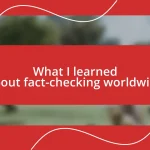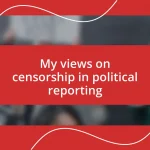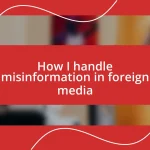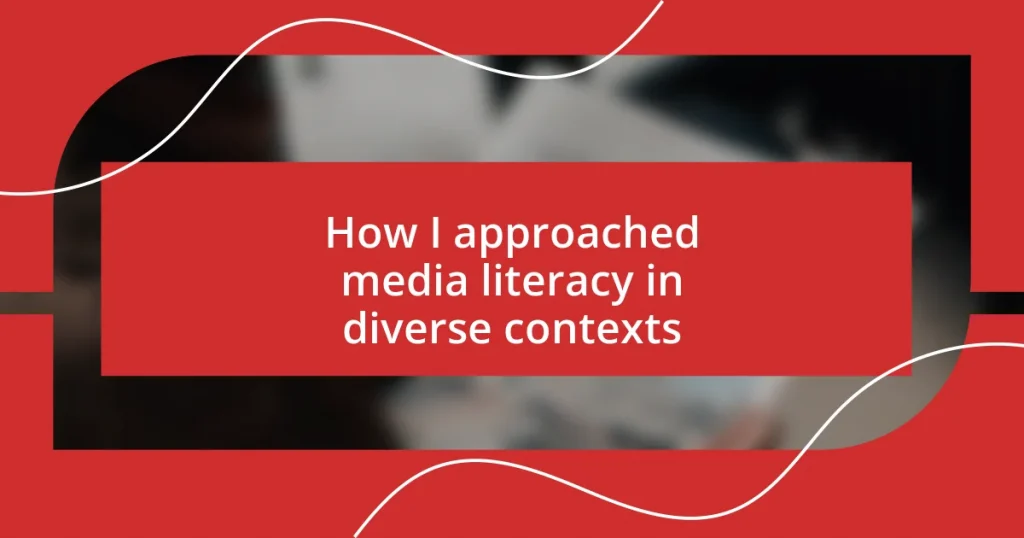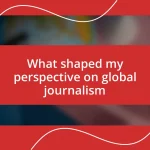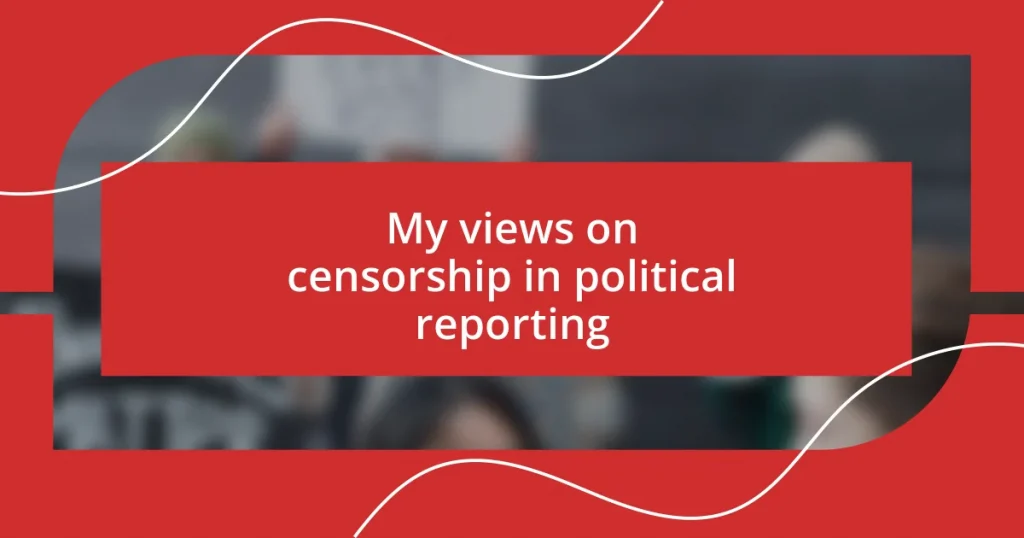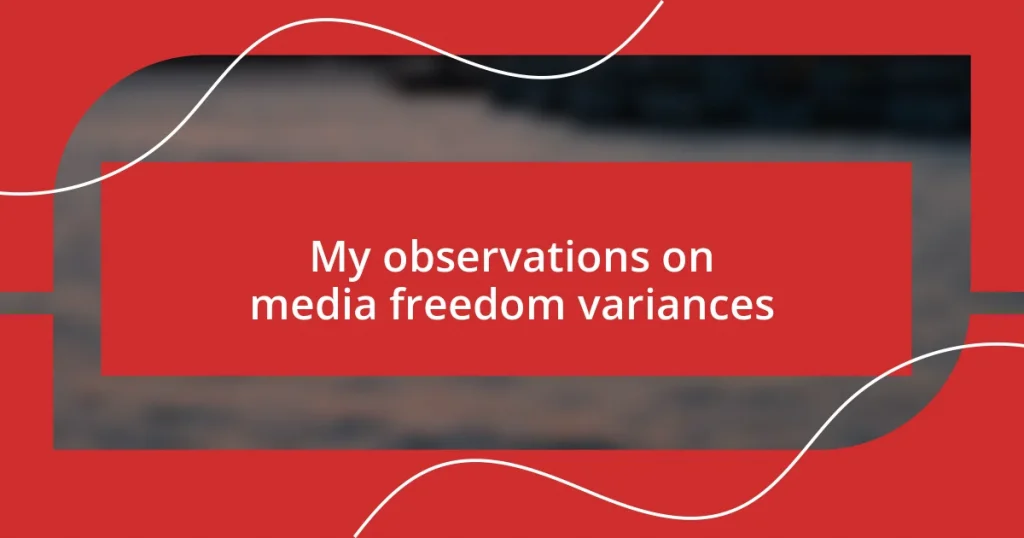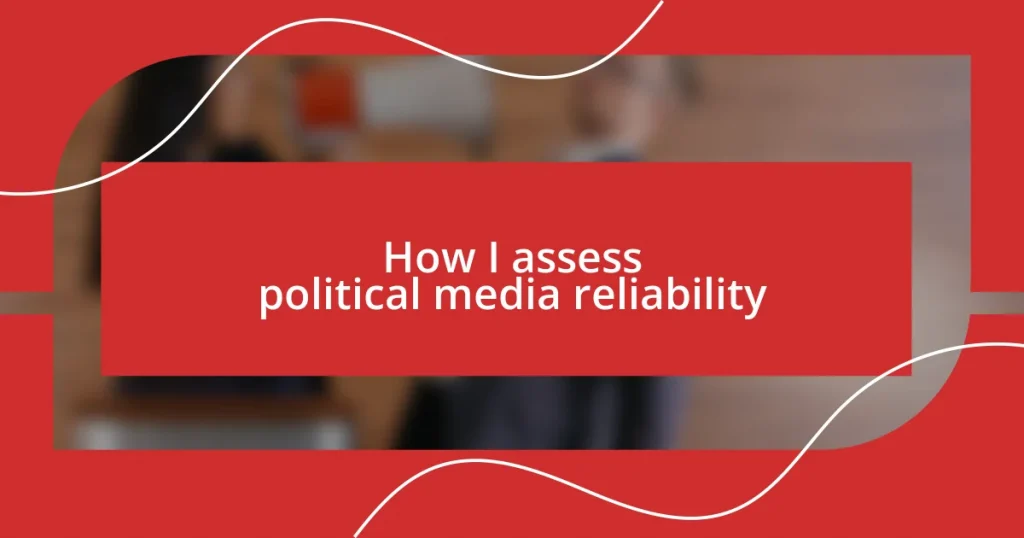Key takeaways:
- Media literacy involves critically accessing, analyzing, and creating media to better understand diverse narratives and perspectives.
- Recognizing audience demographic differences is essential for tailoring media messages, as interpretations can vary significantly based on age, ethnicity, and socio-economic status.
- Continuing education in media literacy promotes collaboration and fresh insights, enhancing understanding and community support in addressing ongoing challenges like misinformation.
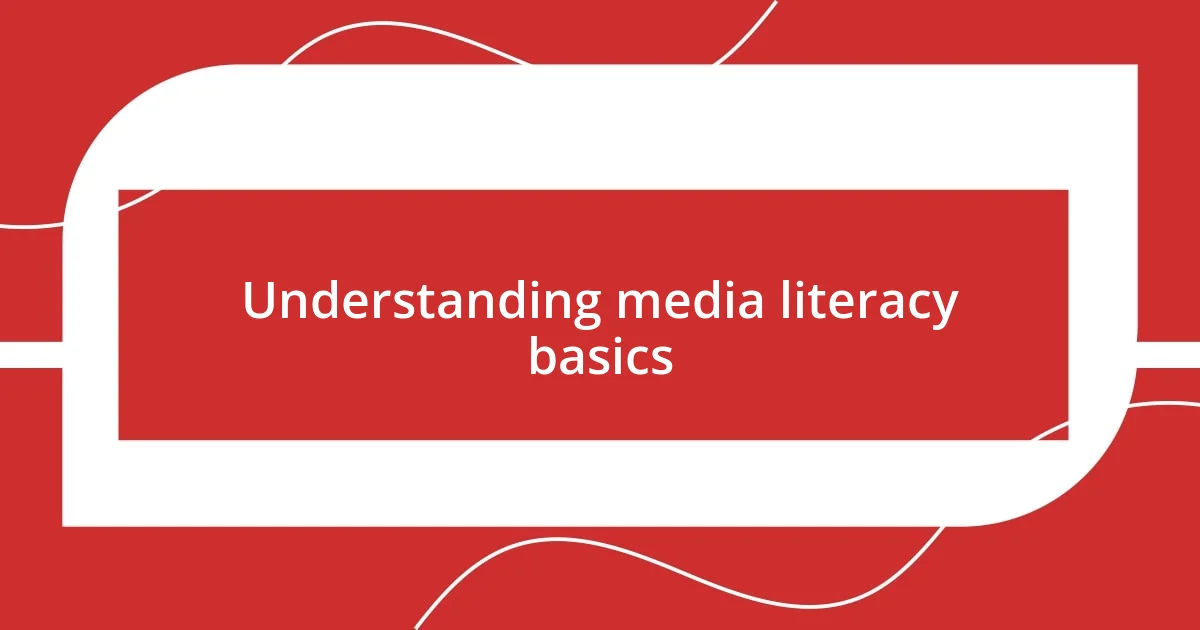
Understanding media literacy basics
Media literacy is essentially the ability to access, analyze, evaluate, and create media, which is something I’ve come to appreciate more and more over the years. I still remember the first time I realized how misleading headlines can be—an article I clicked on promised one thing, but the content delivered something entirely different. That moment sparked my journey into understanding the importance of questioning the media I consume.
It’s fascinating, isn’t it? We often don’t stop to think about how media shapes our perceptions and beliefs. I encountered this firsthand when sharing a viral video with friends, only to find out later that it had been heavily edited. That experience made me question not just the media itself but also my responsibility as a consumer. How many of us blindly share information without verifying it? This realization was crucial for me, highlighting the need to cultivate a more critical approach to media.
In learning about media literacy, I’ve also noticed how vital context is in understanding messages. For example, when I watched a documentary that shed light on a different culture, I felt a mix of emotions—curiosity and a desire for a deeper understanding. It made me realize that media isn’t just about consumption; it’s about connecting to diverse narratives and perspectives as well. Isn’t that something we should all aim to do, to listen and learn from the voices that are often unheard?
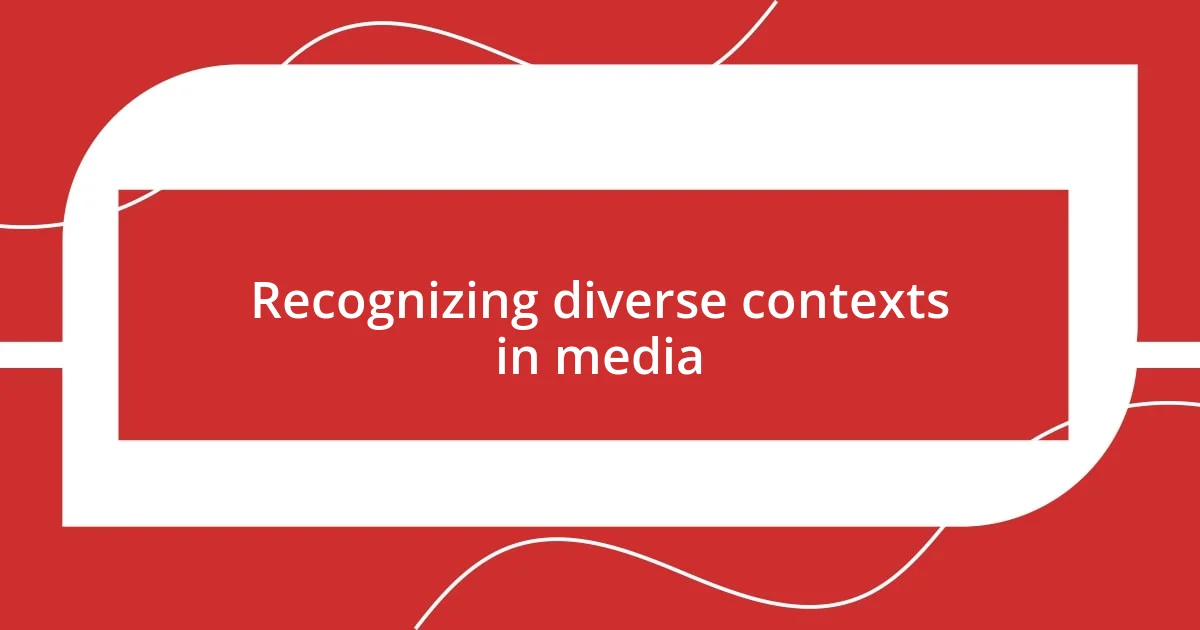
Recognizing diverse contexts in media
Recognizing diverse contexts in media is crucial in navigating today’s information landscape. I recall a time when I stumbled upon a podcast from a local community I knew little about. The stories shared were so different from my own experiences, yet they revealed universal truths about struggle and resilience that resonated deeply with me. This experience underscored the importance of acknowledging varied contexts—what’s normal for one group can be completely foreign to another.
- Different cultural backgrounds influence media production and consumption.
- Local narratives can challenge global norms, giving voice to underrepresented issues.
- Understanding context helps in dissecting biases and motivations behind media messages.
- Social media can amplify specific contexts but may also oversimplify complex issues.
- Personal anecdotes often bridge the gap between diverse experiences and broader audiences.
Each story I’ve encountered has reminded me that media literacy is not just about analysis but also about empathy. When I took the time to engage with stories from different perspectives, I found myself more equipped to understand and appreciate the multifaceted nature of our world. It’s a continuous journey, but each distinct media context enriches my understanding of the collective human experience.
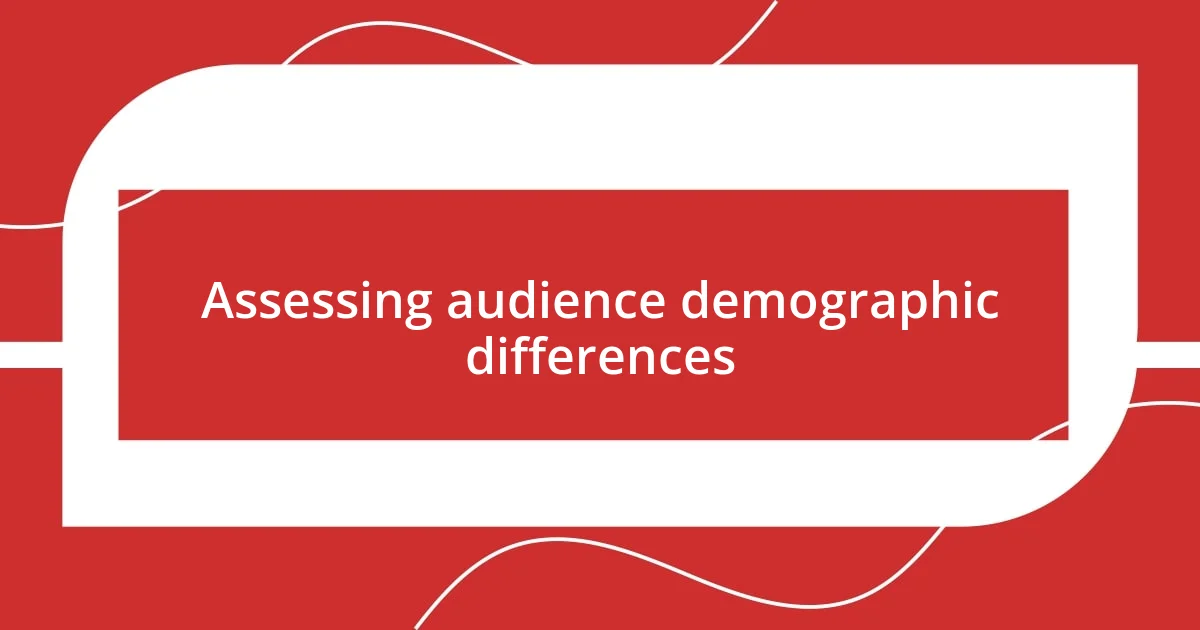
Assessing audience demographic differences
When I began assessing audience demographic differences, I quickly learned that factors like age, ethnicity, and socio-economic status play a significant role in media consumption. I recall discussing a trending news story with friends from various backgrounds. The contrast in our reactions was eye-opening; while some saw the report as a reflection of injustice, others felt it misrepresented their communities. It was clear to me that our demographic differences shaped how we interpreted the media.
As I dived deeper into this topic, I realized that even subtle variations in demographics could lead to vastly different interpretations of the same content. For instance, during a community event, I shared a video meant to celebrate local achievements. Surprisingly, people from different age groups engaged with it differently—teenagers found it inspiring, while older attendees felt it glossed over key challenges. This made me appreciate the need for tailored messaging that resonates with diverse audiences.
Recognizing these demographic nuances is essential for effective media literacy. When I worked on a campaign promoting mental health awareness, understanding the social contexts of my target audience was pivotal. Each demographic had unique triggers and barriers, which shaped our messaging approach. This experience reinforced my belief that appreciating audience differences is not just helpful but necessary for fostering genuine connections and effective communication.
| Demographic Factor | Impact on Media Interpretation |
|---|---|
| Age | Varied engagement levels; younger audiences may prefer visual content, while older generations may favor in-depth articles. |
| Ethnicity | Different cultural lenses can influence perceptions of representation and credibility in media. |
| Socio-economic Status | Affects access to media and the prioritization of particular issues within narratives. |
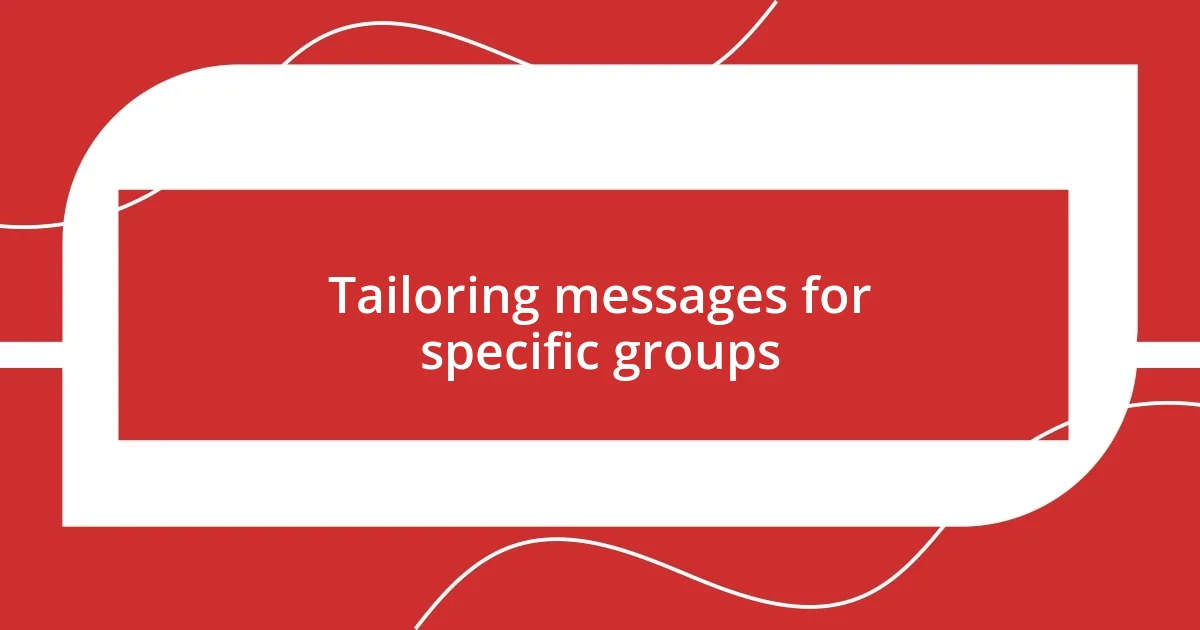
Tailoring messages for specific groups
When I consider the importance of tailoring messages for specific groups, I think about a community workshop I led on media literacy. During the session, participants from various age brackets shared their preferred media formats. It was fascinating to see how younger individuals gravitated toward interactive content, while older attendees appreciated traditional articles. This stark contrast made me wonder: how can we craft a single message that resonates with such diverse preferences?
I also remember working on a social media campaign aimed at raising awareness about environmental issues. We had to adjust our messaging based on cultural contexts. For instance, I noticed that messages emphasizing community and tradition resonated more deeply with some groups, while others preferred data-driven arguments. It drove home the point that one-size-fits-all messaging often overlooks vital aspects of individual identity and experience. Isn’t it incredible how personal stories can spark empathy and connection among vastly different audiences?
As I continue to navigate different media landscapes, I’ve realized that understanding specific group dynamics isn’t just advantageous; it’s essential. Reflecting on my experiences, I see how incorporating local narratives into broader discussions makes the content more relatable. When I shared a personal story about my neighborhood’s environmental challenges, suddenly the audience felt a sense of shared concern and urgency. Isn’t that the beauty of tailored messaging? It bridges divides and cultivates understanding.
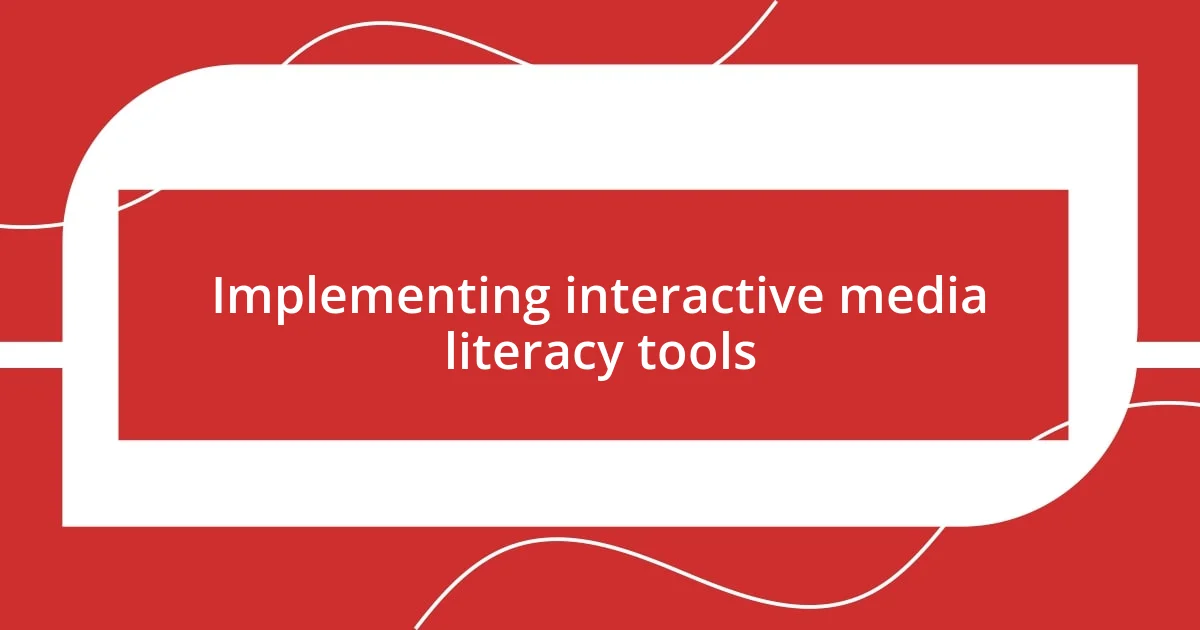
Implementing interactive media literacy tools
When implementing interactive media literacy tools, I found that hands-on experiences often create deeper understanding. I remember hosting an online workshop where we utilized interactive quizzes. Participants loved them—they prompted discussions, and I could see the “aha” moments unfold in real-time. It struck me how this immediate engagement can reveal misconceptions about media, turning passive consumption into active analysis.
In my own experience, I have noticed that utilizing social media platforms for interactive storytelling can also enhance media literacy. I once organized a community campaign that encouraged participants to share their media interpretations through creative posts. The range of perspectives was illuminating! It was like watching a tapestry of insights being woven—each thread highlighting different interpretations influenced by individual backgrounds. I couldn’t help but wonder: how many diverse narratives go unheard when we stick to traditional formats?
Moreover, I emphasize the importance of creating safe spaces for discussion within these interactive tools. During a discussion forum I hosted, a participant shared a painful story about misinformation impacting their family. This moment fostered empathy amongst attendees and encouraged a collaborative approach to navigating media. It reminded me that when we incorporate emotional connections and real-life experiences, we not only teach media literacy but also build community understanding and resilience. Isn’t that what we truly want—an informed and united audience?
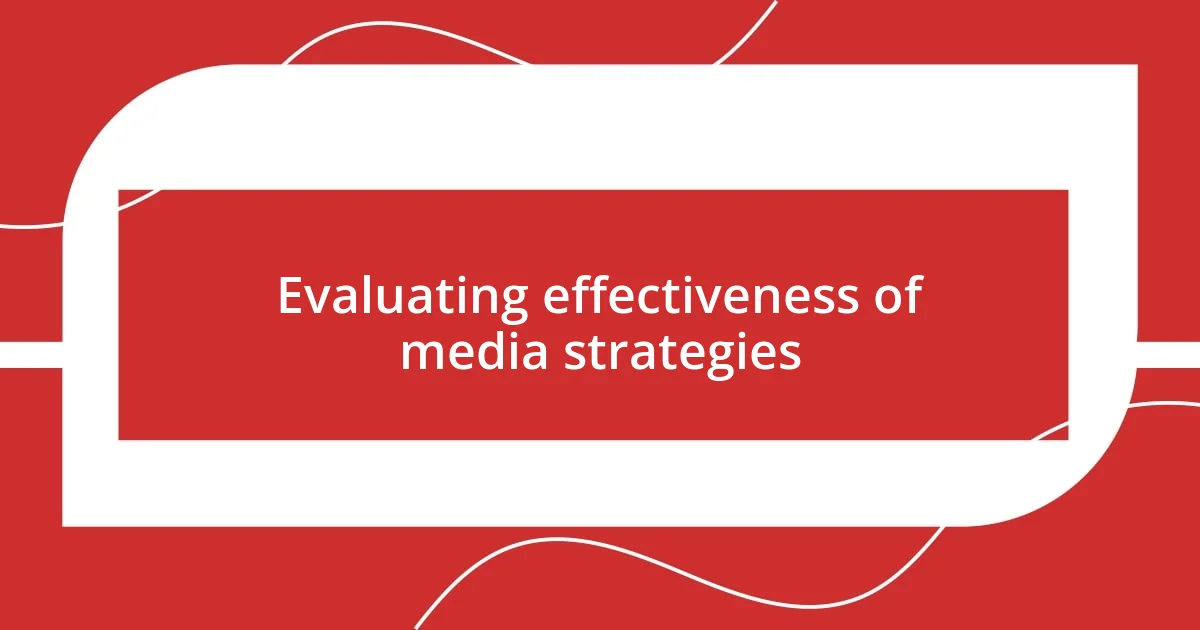
Evaluating effectiveness of media strategies
Evaluating the effectiveness of media strategies requires a keen eye for assessing outcomes. In one campaign I initiated, we analyzed engagement metrics like shares, comments, and reach to gauge the impact of our messaging. When I witnessed a significant uptick in discussion and sharing within specific communities, I felt a sense of validation. It made me reflect: how much do these numbers truly represent real-world understanding?
One time, I organized a focus group where we discussed the media’s portrayal of mental health. Observing participants dissect our media strategies, they pointed out what resonated and what fell flat. Their feedback was invaluable, highlighting the importance of connecting emotionally with audiences. Doesn’t it make you think about how crucial active listener engagement is in evaluating our efforts?
Ultimately, gathering qualitative data through participant interviews has proven to be just as important. I remember a particularly enlightening conversation with a community leader who shared how they reinterpreted our campaign in a way that sparked new dialogue in their network. Hearing their perspective opened my eyes to unseen outcomes—proof that success isn’t just in metrics but also in meaningful conversations. How do we ensure we’re capturing these narratives? It’s essential to keep exploring and listening beyond the numbers.
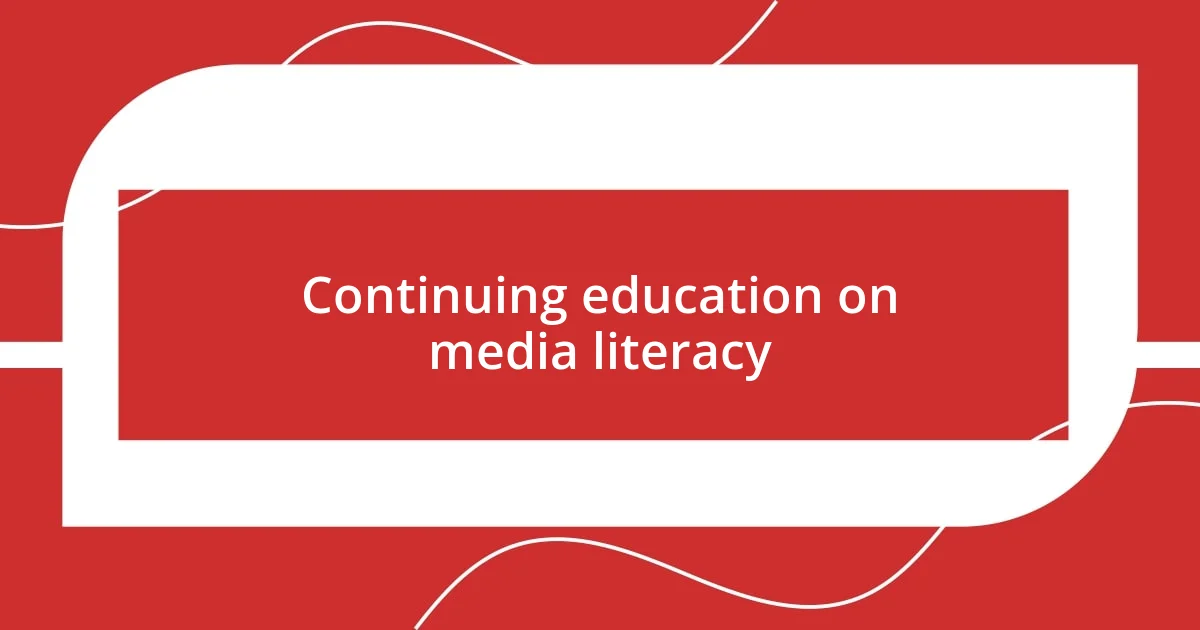
Continuing education on media literacy
Continuing education in media literacy is a journey, not a one-time event. I’ve often found that revisiting the basics can be just as impactful as learning new concepts. For instance, I once attended a virtual seminar that integrated recent developments in media technology with foundational teachings. It was empowering to engage with both seasoned professionals and newcomers, allowing for a blend of experiences that enriched the discussion. Have you ever noticed how revisiting a topic with fresh eyes can lead to new insights? It certainly did for me that day.
In another instance, I enrolled in a course specifically designed for educators, focused on integrating media literacy into different subjects. The result was quite remarkable! We not only learned about the latest digital tools but also shared real-life applications that made the lessons relatable to students. I remember one professor describing how they turned a simple news article analysis into an exciting debate. It’s amazing how connecting with others in this way can spark creativity and innovation. Wouldn’t you agree that sharing our approaches can only strengthen our strategies?
I also believe that peer support plays a vital role in continued education. During a community workshop, I vividly recall a moment when a participant shared their struggle in addressing misinformation with their students. We gathered around to brainstorm solutions together, and that collaborative spirit felt exhilarating. The takeaway was clear: when we support each other, we cultivate a richer learning environment. Isn’t it fascinating how shared experiences can enhance our understanding while fostering a supportive community?
